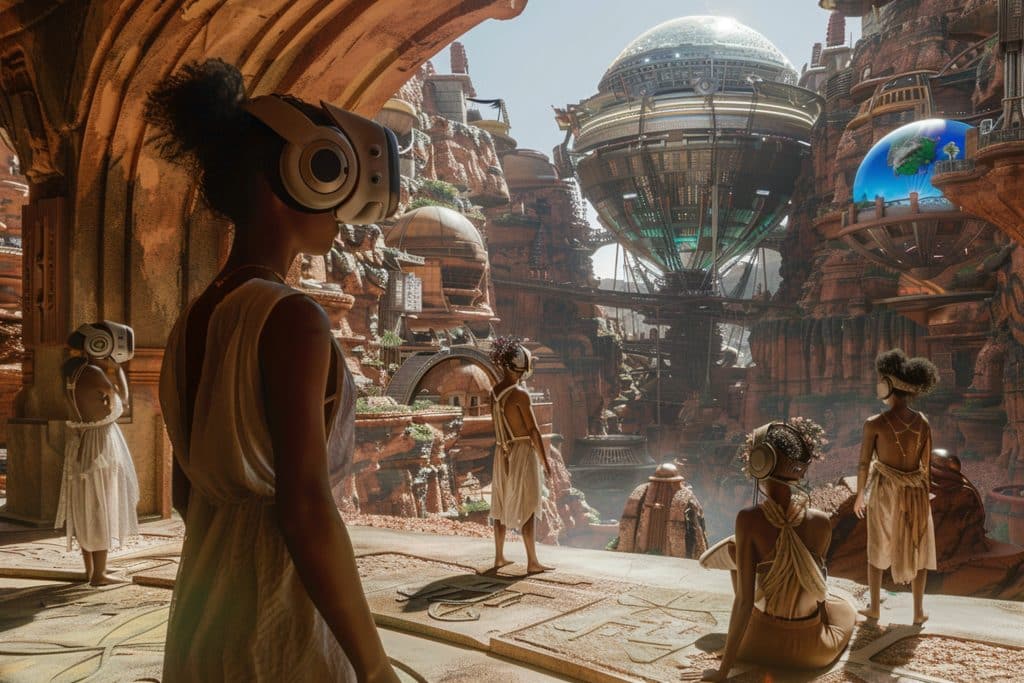New World Ancient Civilizations: Recent Discoveries & Insights

Recent archaeological expeditions are rapidly redefining our understanding of New World ancient civilizations, continuously shedding light on their intricate societies, advanced engineering, and cultural practices, challenging long-held assumptions.
Unlocking the Secrets of New World Ancient Civilizations: Recent Discoveries and Insights is an ongoing saga, with new findings consistently reshaping our understanding of the Americas’ rich pre-Columbian past. From the dense jungles of Mesoamerica to the towering peaks of the Andes, archaeologists are unearthing groundbreaking evidence that challenges long-held theories about these complex societies.
Revolutionary LiDAR Scans Reshape Mayan Understanding
In a significant breakthrough, advanced Light Detection and Ranging (LiDAR) technology is fundamentally altering our perception of ancient Mayan civilization. Recent scans, particularly in Guatemala and Mexico, have unveiled vast urban landscapes previously hidden beneath dense rainforest canopies, suggesting a far more extensive and interconnected society than once imagined.
These non-invasive surveys penetrate vegetation, mapping the terrain below with incredible precision. The data reveals intricate networks of roads, sophisticated irrigation systems, and thousands of previously undocumented structures, from small dwellings to monumental temples and defensive fortifications.
Unveiling Hidden Cities and Infrastructure
LiDAR has effectively peeled back centuries of jungle growth, exposing the true scale of Mayan settlements. This technology confirms that the Maya were not scattered city-states but part of a highly organized and densely populated civilization.
- Vast Urban Sprawl: Scans indicate urban centers were up to four times larger than previously estimated.
- Complex Agriculture: Discovery of extensive agricultural terraces and canals points to advanced food production systems.
- Interconnected Networks: A sprawling grid of causeways suggests widespread communication and trade routes between cities.
- Defensive Structures: Evidence of walls and fortifications highlights periods of conflict and strategic planning.
Andean Civilizations: New Perspectives on Pre-Inca Societies
Beyond the well-known Inca Empire, recent archaeological work in the Andean region is bringing to light the complexity and sophistication of earlier cultures. Discoveries are providing fresh insights into the Wari, Moche, Nazca, and Chavin civilizations, revealing their unique contributions to the cultural tapestry of ancient South America.
Excavations in Peru have, as of late, unearthed remarkably preserved artifacts and architectural remains that speak to advanced social organization, intricate belief systems, and impressive technological prowess, predating the Inca by centuries.
Moche and Wari: Masters of Art and Engineering
The Moche of Peru, known for their exquisite pottery and metallurgy, continue to surprise researchers. New findings at sites like Huaca de la Luna are expanding our knowledge of their ritual practices and social hierarchy. Similarly, the Wari, who established one of the first empires in the Andes, are now understood to have exerted influence over vast territories through sophisticated administrative systems.
- Moche Craftsmanship: Intricate gold and silver artifacts, depicting deities and daily life, showcase unparalleled artistic skill.
- Wari Urban Planning: Discovery of well-planned cities with distinct residential, administrative, and ceremonial sectors.
- Nazca Lines Context: Ongoing research connects the famous Nazca Lines to astronomical observations and water rituals.
- Chavin Influence: New evidence suggests Chavin de Huántar was a major ceremonial center influencing subsequent Andean cultures.
The Olmec Enigma: Redefining Mesoamerica’s Mother Culture

The Olmec civilization, often considered the ‘mother culture’ of Mesoamerica, continues to be a source of intense study and new revelations. Recent archaeological endeavors are pushing back the timeline of their emergence and expanding our understanding of their societal structure and widespread influence.
Ongoing excavations in regions like Tabasco and Veracruz, Mexico, are unearthing new Olmec sites and artifacts, providing crucial data that helps trace their development and their impact on later civilizations such as the Maya and Zapotec.
The monumental basalt heads are perhaps their most iconic legacy, but recent findings demonstrate a far more complex society with advanced calendrical systems, early writing, and extensive trade networks.
Expanding Olmec Reach and Innovations
New evidence suggests the Olmec’s sphere of influence was broader than previously thought, with stylistic and iconographic elements appearing in distant regions. This indicates a significant cultural exchange and a foundational role in Mesoamerican development.
Researchers are also examining new data on Olmec agricultural practices, including sophisticated water management systems, which allowed them to sustain large populations in challenging environments. The interplay between their religious beliefs and their daily life is also becoming clearer through the interpretation of recently discovered ceremonial objects.
North American Ancient Cultures: Beyond the Mound Builders
While often overshadowed by their southern counterparts, the ancient civilizations of North America, particularly the Mississippian cultures and Ancestral Puebloans, are yielding significant new discoveries. Recent archaeological work is showcasing their complex social structures, monumental architecture, and sophisticated agricultural practices.
Sites like Cahokia in Illinois, once a thriving metropolis, continue to reveal secrets through ongoing excavations. New insights into the Ancestral Puebloans in the Southwestern United States are also emerging, detailing their remarkable cliff dwellings and intricate astronomical alignments.
Cahokia’s Urban Planning and Puebloan Adaptations
Cahokia, a pre-Columbian city, was once larger than London at its peak, according to current estimates. Recent geophysical surveys are revealing previously unknown residential areas and ceremonial precincts, illustrating a highly organized urban layout.
- Cahokia’s Influence: Evidence of widespread trade networks connected Cahokia to communities across North America.
- Puebloan Water Management: Discovery of ancient reservoirs and irrigation canals showcasing ingenious adaptation to arid environments.
- Social Stratification: Burial analyses at both Mississippian and Puebloan sites indicate clear social hierarchies.
- Astronomical Knowledge: New studies confirm the precise alignment of structures with celestial events, reflecting deep astronomical understanding.
Advanced Technologies and Engineering Feats
Recent archaeological findings consistently highlight the impressive technological and engineering capabilities of New World ancient civilizations. From intricate water management systems to monumental construction techniques, these societies demonstrated ingenuity that rivals, and in some cases, surpasses contemporary Old World achievements.
The precision of Mayan calendars, the structural integrity of Inca stonework, and the hydrological systems of various cultures are all subjects of ongoing research, with new data frequently emerging to deepen our appreciation of their technical prowess.
Ingenious Solutions to Environmental Challenges
Archaeologists are uncovering more about how these civilizations adapted to and even thrived in diverse and often challenging environments. Their mastery of resource management, agriculture, and construction is a testament to their advanced understanding of their surroundings.
For example, new studies on Inca road systems reveal a sophisticated network designed to traverse extreme mountainous terrain, complete with bridges and retaining walls, demonstrating an unparalleled understanding of civil engineering in a difficult landscape.
Reinterpreting Ancient Narratives and Cultural Practices
Every new discovery contributes to a more nuanced and accurate understanding of the cultural practices, belief systems, and daily lives of New World ancient civilizations. Epigraphic studies, combined with archaeological context, are allowing for richer interpretations of ancient texts and iconography.
From the complex cosmology of the Maya to the spiritual significance of Andean textiles, recent insights are helping to reconstruct the vibrant intellectual and spiritual worlds of these societies, moving beyond simplistic narratives.
Deciphering Rituals and Social Dynamics
New interpretations of burial goods, ceremonial architecture, and artistic representations are providing a clearer picture of religious rituals, ancestor veneration, and political power structures. This ongoing process of decipherment is shedding light on the intricate social dynamics that governed these ancient communities.
Recent analyses of food remains and domestic structures also offer glimpses into daily life, diet, and household organization, painting a more complete picture of what it meant to live in these ancient civilizations.
| Key Discovery Area | Brief Impact/Insight |
|---|---|
| LiDAR Mapping | Reveals extensive, interconnected Mayan urban landscapes, vastly increasing population and infrastructure estimates. |
| Andean Pre-Inca Sites | New insights into advanced Wari and Moche societies, their art, engineering, and broad influence before the Inca. |
| Olmec Expansion | Evidence suggests wider Olmec influence and earlier emergence, solidifying their ‘mother culture’ role in Mesoamerica. |
| North American Cultures | Uncovering complex urban planning and sophisticated agricultural methods of Mississippian and Puebloan peoples. |
Frequently Asked Questions About New World Discoveries
LiDAR (Light Detection and Ranging) uses laser pulses to create detailed 3D maps of terrain. It penetrates dense vegetation, revealing hidden structures and landscapes that are invisible from the ground. This technology is revolutionizing archaeology by significantly speeding up discovery and providing unprecedented detail of ancient sites beneath forests.
Currently, the Mayan civilization in Mesoamerica and various pre-Inca cultures in the Andean region (like the Wari and Moche) are at the forefront of new discoveries. Additionally, evidence from the Olmec heartland and Mississippian sites in North America is providing crucial new insights into their complex societies.
Absolutely. LiDAR scans, for instance, suggest that Mayan cities were far more densely populated and extensive than previously believed, indicating larger overall populations. Similar findings in other regions are continually revising population estimates and challenging previous assumptions about the scale of these ancient societies.
They possessed remarkable technologies, including sophisticated water management systems (canals, reservoirs), advanced astronomical observation for calendrical systems, intricate metallurgy (gold, silver, copper), monumental stone construction without mortar, and advanced agricultural techniques like terracing and raised fields. These innovations highlight their ingenuity.
Recent insights are enriching and often correcting historical narratives by providing more accurate data. They challenge Eurocentric views, highlight the independent development of complex societies, and offer a deeper appreciation for the diverse achievements and contributions of indigenous peoples to human history and civilization.
Looking Ahead: The Future of New World Archaeology
The pace of discovery in New World archaeology continues to accelerate, driven by breakthroughs in remote sensing, DNA analysis, and digital modeling. These tools are transforming how we understand ancient civilizations—revealing lost cities, trade routes, and cultural networks that challenge long-held assumptions about human development across the Americas. Each new finding adds depth to a story still unfolding beneath our feet.
Equally significant is the growing collaboration between scientists and Indigenous communities, whose ancestral knowledge offers context and continuity to archaeological data. This partnership not only enriches interpretation but also fosters respect for the living descendants of these ancient societies. Together, they are reshaping the discipline into one grounded in shared stewardship and mutual learning.
For readers seeking a deeper exploration of how these discoveries continue to redefine history, the American Scientist article on “The Old New World” provides valuable insight into the evolving relationship between archaeology, technology, and cultural identity. As the field advances, it will continue to reveal not only the past’s complexity but also humanity’s enduring drive to understand its origins.